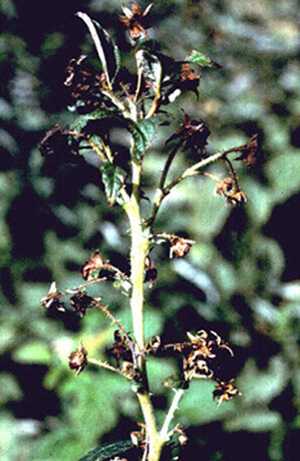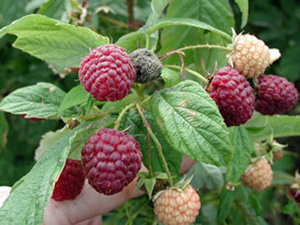Botrytis, or gray mold (Botrytis cinerea) infects flowers during wet weather and results in moldy berries, even before they ripen.
It can also infect canes. These infections are problematic only under very wet conditions. If these tissues are placed in a plastic bag and kept warm and moist, the fungus will sporulate.

Wet weather during fruit ripening also can lead to moldy fruit. Moldy berries are most common in the interior of the canopy where the environment favors disease development.


More information:
- Botrytis Fruit Rot
- Botrytis Fruit Rot “Gray Mold” of Strawberry, Raspberry, and Blackberry – (Ohio State)
- Raspberry Fruit Rots – (University of Kentucky)
Use these resources if you need additional help with diagnosis and to find solutions to your problem.


